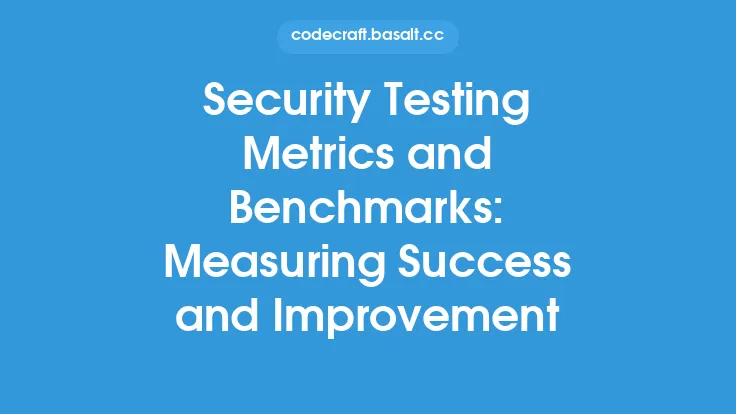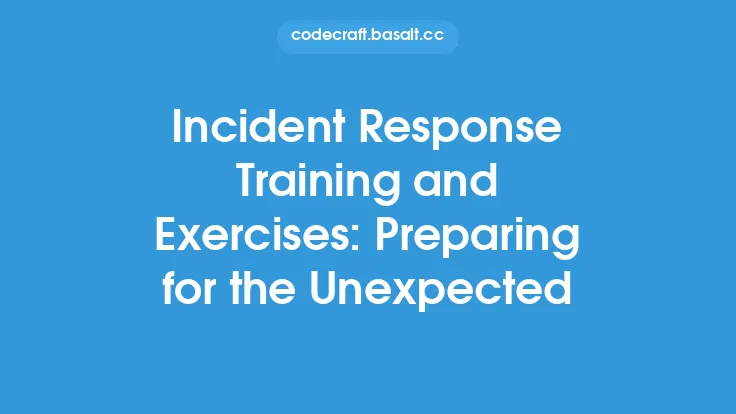Incident response is a critical component of an organization's cybersecurity posture, and measuring its success is essential to identifying areas for improvement. To effectively evaluate the performance of an incident response plan, it's crucial to establish a set of metrics and monitoring tools that provide insights into the response process. These metrics and tools help organizations assess their ability to detect, respond to, and contain security incidents, ultimately minimizing the impact on the business.
Introduction to Incident Response Metrics
Incident response metrics are quantifiable measures used to evaluate the effectiveness of an incident response plan. These metrics can be categorized into several key areas, including detection, response, containment, and post-incident activities. By tracking these metrics, organizations can identify trends, patterns, and areas for improvement, enabling them to refine their incident response strategy and optimize their resources. Common incident response metrics include mean time to detect (MTTD), mean time to respond (MTTR), mean time to contain (MTTC), and mean time to recover (MTTR).
Monitoring Incident Response
Monitoring incident response involves tracking and analyzing the metrics mentioned earlier in real-time. This can be achieved through the use of various tools and technologies, such as security information and event management (SIEM) systems, incident response platforms, and threat intelligence feeds. These tools provide organizations with visibility into their security posture, enabling them to quickly identify and respond to potential security incidents. Additionally, monitoring incident response allows organizations to identify areas where their response plan may be falling short, such as inadequate training or insufficient resources.
Key Performance Indicators (KPIs) for Incident Response
Key performance indicators (KPIs) are measurable values that demonstrate how effectively an organization is achieving its incident response objectives. Common KPIs for incident response include:
- Incident response rate: The percentage of incidents responded to within a specified timeframe.
- Incident containment rate: The percentage of incidents contained within a specified timeframe.
- Incident resolution rate: The percentage of incidents resolved within a specified timeframe.
- Mean time to detect (MTTD): The average time taken to detect a security incident.
- Mean time to respond (MTTR): The average time taken to respond to a security incident.
- Mean time to contain (MTTC): The average time taken to contain a security incident.
- Mean time to recover (MTTR): The average time taken to recover from a security incident.
Metrics for Evaluating Incident Response Effectiveness
Evaluating the effectiveness of an incident response plan requires a comprehensive set of metrics that provide insights into the response process. These metrics can be categorized into several key areas, including:
- Detection metrics: These metrics evaluate the ability of an organization to detect security incidents, including the number of false positives, false negatives, and true positives.
- Response metrics: These metrics evaluate the ability of an organization to respond to security incidents, including the time taken to respond, the effectiveness of the response, and the resources utilized.
- Containment metrics: These metrics evaluate the ability of an organization to contain security incidents, including the time taken to contain, the effectiveness of the containment, and the resources utilized.
- Post-incident metrics: These metrics evaluate the ability of an organization to recover from security incidents, including the time taken to recover, the effectiveness of the recovery, and the resources utilized.
Tools and Technologies for Incident Response Monitoring
Several tools and technologies are available to support incident response monitoring, including:
- Security information and event management (SIEM) systems: These systems provide real-time monitoring and analysis of security-related data, enabling organizations to quickly identify and respond to potential security incidents.
- Incident response platforms: These platforms provide a centralized interface for managing incident response activities, including incident tracking, communication, and collaboration.
- Threat intelligence feeds: These feeds provide organizations with real-time threat intelligence, enabling them to stay informed about emerging threats and vulnerabilities.
- Automation tools: These tools automate incident response activities, such as incident detection, response, and containment, enabling organizations to respond quickly and effectively to security incidents.
Best Practices for Implementing Incident Response Metrics and Monitoring
Implementing incident response metrics and monitoring requires careful planning and execution. Best practices include:
- Establishing clear incident response objectives and KPIs.
- Selecting the right tools and technologies to support incident response monitoring.
- Providing ongoing training and awareness programs for incident response teams.
- Continuously reviewing and refining incident response metrics and monitoring processes.
- Ensuring incident response metrics and monitoring are aligned with overall business objectives.
Challenges and Limitations of Incident Response Metrics and Monitoring
While incident response metrics and monitoring are essential for evaluating the effectiveness of an incident response plan, there are several challenges and limitations to consider. These include:
- Data quality issues: Poor data quality can lead to inaccurate metrics and monitoring results.
- Tool complexity: Incident response tools and technologies can be complex and difficult to use, requiring significant training and expertise.
- Resource constraints: Implementing and maintaining incident response metrics and monitoring can require significant resources, including personnel, equipment, and budget.
- Evolving threats: The threat landscape is constantly evolving, requiring incident response metrics and monitoring to adapt and change to stay effective.
Conclusion
Incident response metrics and monitoring are critical components of an organization's cybersecurity posture, providing insights into the effectiveness of the incident response plan and identifying areas for improvement. By establishing a set of metrics and monitoring tools, organizations can evaluate their ability to detect, respond to, and contain security incidents, ultimately minimizing the impact on the business. While there are challenges and limitations to consider, the benefits of incident response metrics and monitoring make them an essential investment for any organization seeking to protect itself from cyber threats.





